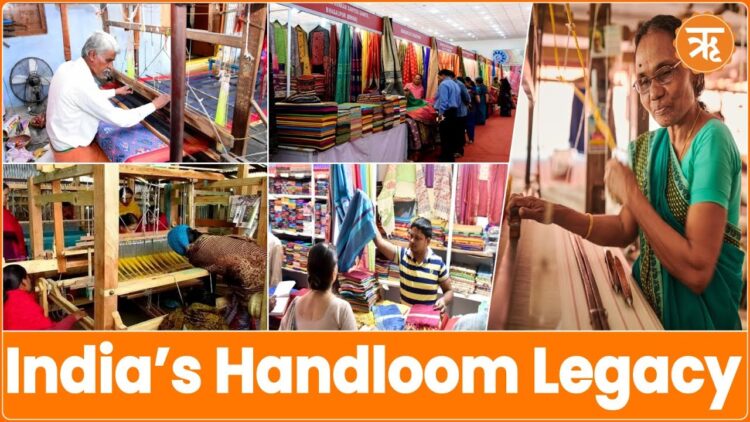In an era dominated by fast fashion and mass production, it becomes the need to honor India’s rich weaving traditions, craftsmanship, and cultural heritage; which is the backbone of the nation’s rural regions. To commemorate the same, the National Handloom Day is celebrated annually on August 7 to highlight the value of slow, sustainable, and handcrafted fashion. Designers and experts also stress the importance of preserving handloom weaving for its cultural significance and support for artisanal communities.
India’s handloom artists are renowned for their unique weaving and printing techniques, passed down through generations in small towns and villages. With 23.77 lakh looms, handloom weaving remains a major rural activity, with 88.7% of weaver households in villages and 72% of weavers being women. Notable handlooms include Kanjeevaram silk sarees, Banarasi silk sarees, Pashmina shawls, Chikankari embroidery, and Ikat textiles.
National Handloom Day traces its roots to the Swadeshi Movement of August 7, 1905, which advocated for indigenous industries. In 2015, the Government of India officially designated this date to honor handloom artisans and their socio-economic contributions, with the first celebration led by Modi in Chennai. In Panipat, the handloom industry is the largest consumer of rags for re-processing, which contributes to the city’s reputation as the “City of Weavers” in India. While Panipat is a hub for manufacturers specializing in home decor items; the Indian handloom sector employs around 3.5 million people, remaining a vital part of India’s cultural legacy. However, the Indian handloom sector faces several challenges: difficulties in sourcing raw materials, unmet credit needs, the rise of power looms, inadequate infrastructure, a need for design improvements, limited marketing strategies, and the ongoing impact of COVID-19.
In order to address these challenges and ensure that the handloom industry continues to thrive, this year India’s handloom celebration will be marked by “VIRAASAT,” a two-week exhibition from August 3 to 16, 2024, at Handloom Haat, Janpath. Organized by the National Handloom Development Corporation Ltd under the Ministry of Textiles, “VIRAASAT” offers a chance to explore India’s vibrant weaving heritage.
“VIRAASAT” features 75 stalls showcasing diverse handloom techniques from across India, with products available for purchase daily from 11 am to 8 pm. The event goes beyond shopping, offering workshops on natural dyes, kasturi cotton, and design processes, along with live loom demonstrations, folk dances, and regional cuisine. “VIRAASAT” not only boosts the handloom market but also celebrates the enduring art form and the artisans who sustain it

















Comments